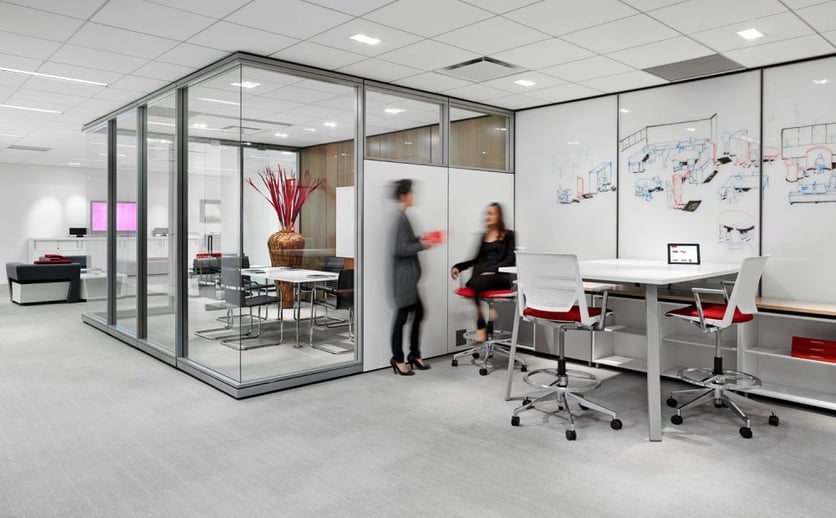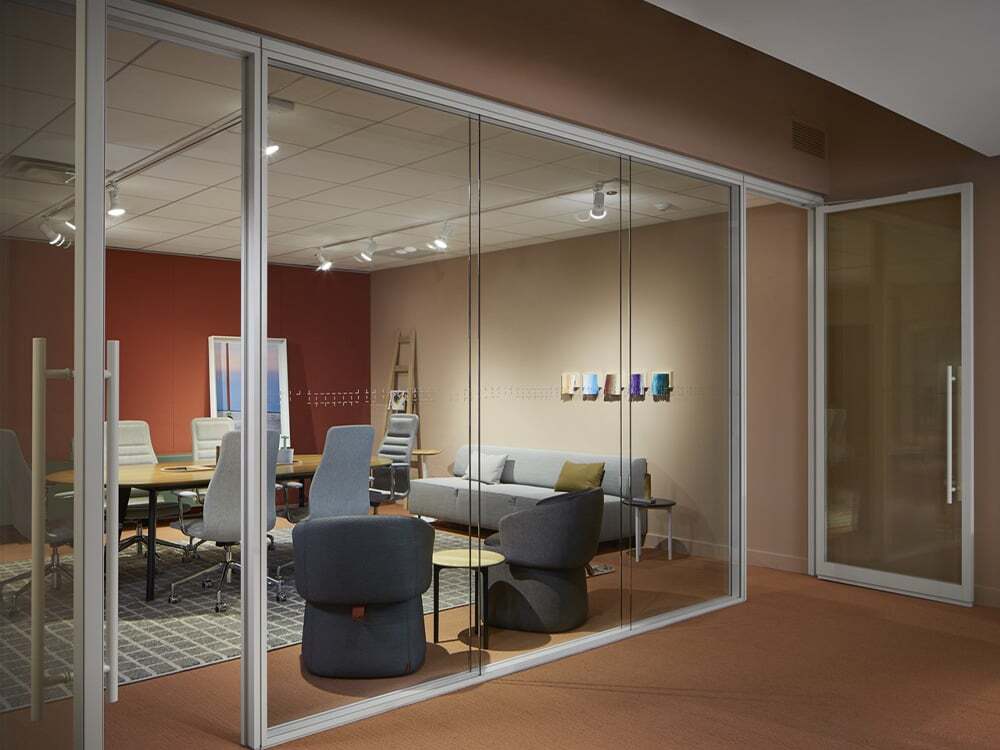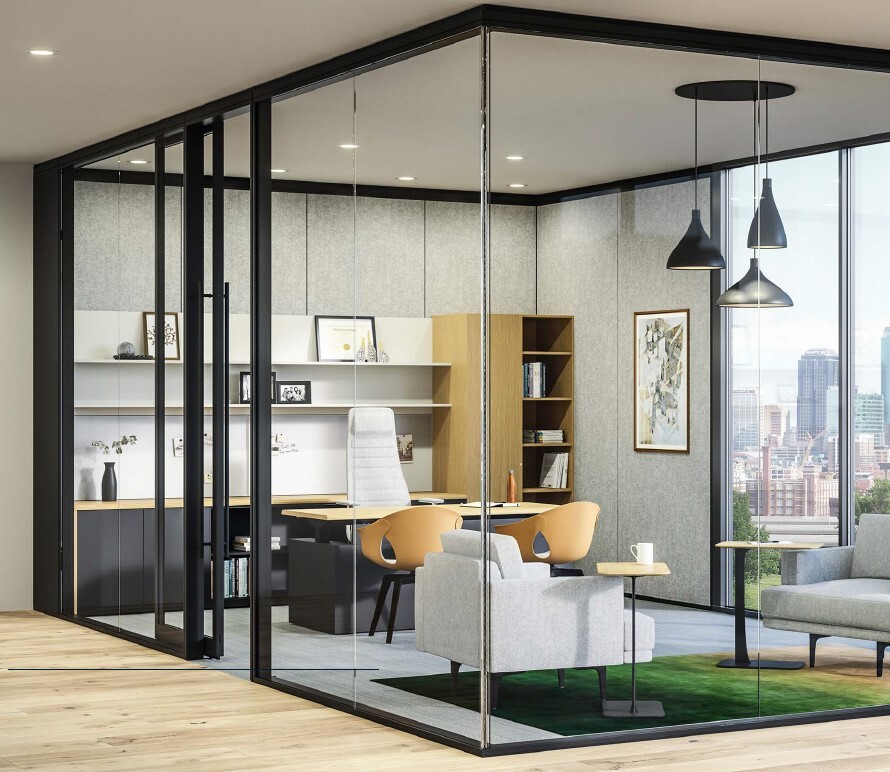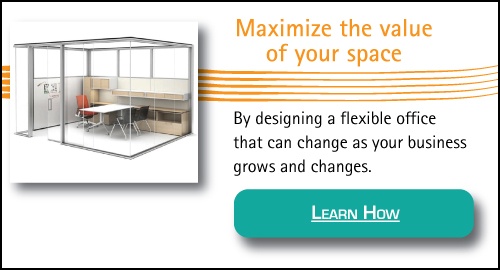What Drives the Cost of Modular Walls? (And What Can You Skip to Save Money)
October 24th, 2025 | 5 min read
By Ahona Saha
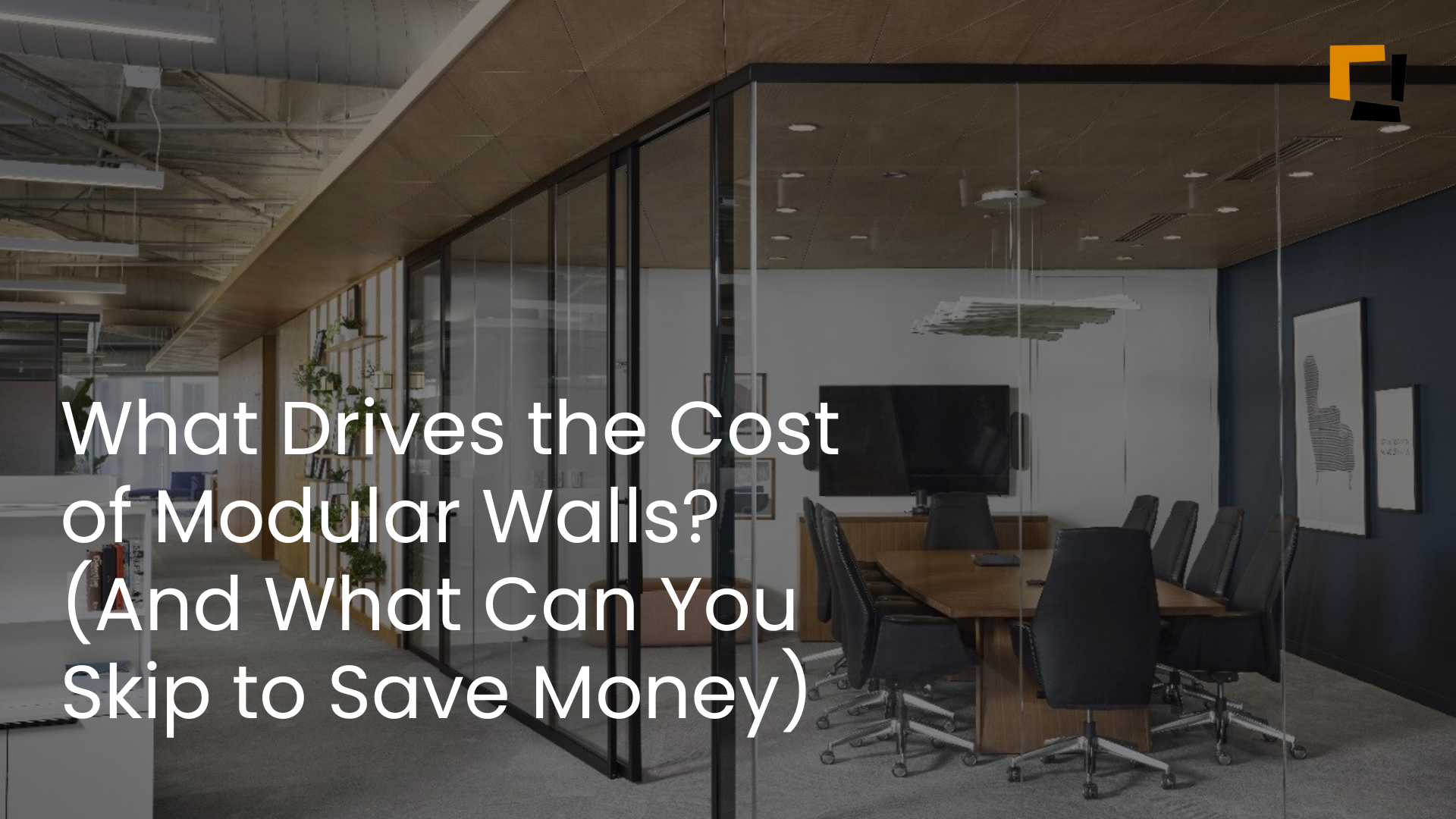
Let’s be honest: modular walls are a game-changer for modern office spaces. But if you’ve ever tried to price them out, you’ve probably noticed the numbers can swing dramatically.
So, what actually drives the cost of modular wall systems? And more importantly, where can you save without compromising function or aesthetics?
This article breaks it all down with radical transparency, so you can make smart, informed decisions.
Did you know? Modular wall systems can reduce costs by up to 53% and installation time by 29%, according to industry sources.
If you want a broader overview of what modular walls are or why they might outperform drywall, we cover those too.
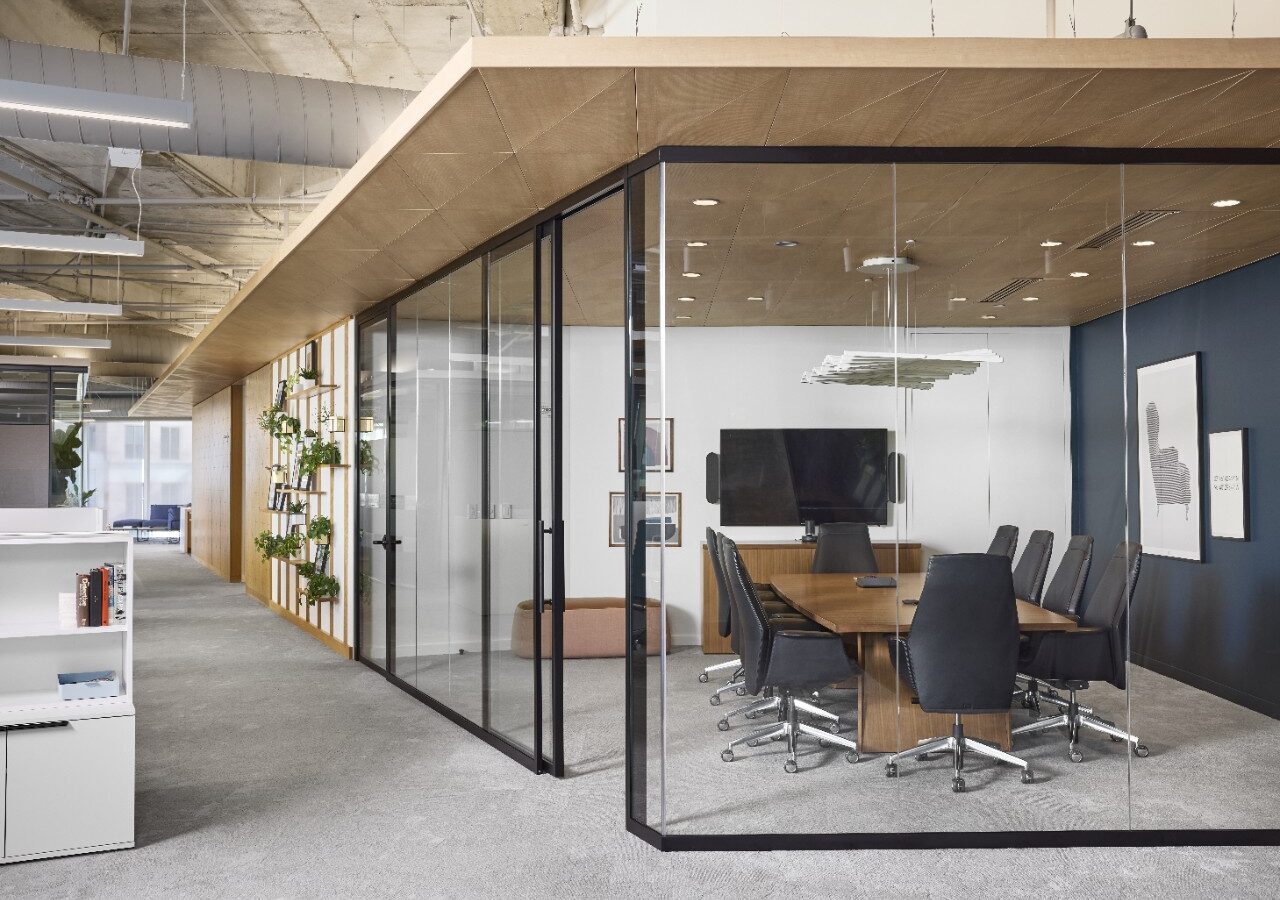
The 5 Biggest Factors That Impact Modular Wall Pricing
1. Wall Materials & Finishes
Let’s start with the surface. What your walls are made of and how they’re finished is usually the biggest factor in cost.
Solid Panels
The most budget-friendly option. These are often finished with paintable skins, a durable surface you can paint any colour you like. This gives you tons of flexibility without the price tag of premium finishes. Paintable skin is especially popular in private offices, support spaces, and anywhere you want a clean, modern look without overspending.
Glass Panels
Glass panels cost more. And within that, there are layers:
-
Single-pane vs. Double-pane: Double-pane gives better sound privacy but increases material cost.
-
Framed vs. Frameless: Frameless looks clean but is not modular (and can’t be reconfigured). Framed glass, on the other hand, is fully modular and more cost-effective.
-
Glass thickness: Thicker glass boosts soundproofing (STC rating) but raises costs. Standard options range from ¼” to ½”.
And don’t forget about premium finishes like wood veneer, fabric, whiteboard surfaces, or steel. These elevate the look...and the price tag. Steel offers top-tier acoustic performance, which is great for meeting rooms or executive spaces.
2. Doors & Hardware
Doors can be sneaky expensive, especially if you go custom.
-
Sliding Doors are typically less expensive than swing doors, but require wall width.
-
Frameless Glass Doors are beautiful but can double or triple door costs.
-
Handles, locks, closers and even the hardware finish (chrome vs. matte black) all influence cost.
One easy way to save? Stick with standard hardware packages. That usually means a basic aluminum lever, clear anodized frame, and a non-locking passage set. It's functional and clean - and unless you're designing for a high-end space, it's all you need.
Soft-close or slow-closers are another nice-to-have that can drive up cost. They add convenience but aren’t always necessary.
3. Ceiling Height
Standard modular wall systems are designed to fit spaces with typical ceiling heights (8' to 10').
We actually encourage custom heights. Going from 8 to 9 or even 10 feet doesn’t usually impact pricing much. Instead, what affects cost is the complexity of the layout and installation which we cover on the next point.
4. Installation Complexity
This one often surprises people.
-
Are walls running in straight lines or odd angles? Angles and curves mean more custom work.
-
Are there existing obstructions? (HVAC, lights, baseboards, columns)
-
Where is the site located? Downtown installs with tight access cost more than open suburban sites.
To ensure successful installations and prevent cost overruns, our trained and certified modular wall installation teams handle each project with precision and care, avoiding the common pitfalls that can drive up costs and delay timelines. Here's a time-lapse video showing just how fast and seamless modular wall installation can come together.
5. Reconfiguration & Lifecycle Planning
One of the biggest advantages of modular walls is reusability.
-
Systems like Enclose and 4Space from Haworth are designed to be moved, reconfigured, or relocated.
-
That flexibility saves thousands on future renovations, even if the upfront investment is higher than drywall.
Some organizations estimate saving up to $1,000 per person when modular walls are reused instead of building new drywall during office changes.
Want to see how modular walls support sustainability too? Check out how modular walls contribute to greener workspaces.
What You Can Skip (and Still Save Smart)
Let’s talk about the things you can skip without regretting it later. These are the decisions that help keep your project on budget, without cutting corners on quality or performance.
1. Stick with Standard Finishes
You don’t need woodgrain or high-gloss panels in a utility space or back office.
-
Use standard laminate in interior offices, meeting rooms, or support spaces.
-
Save premium finishes for front-of-house or executive areas.
2. Coordinate All Trades in Advance
One of the biggest hidden costs in modular wall projects? Poor planning across trades.
If your HVAC, electrical, lighting, or sprinkler teams aren’t looped in early, you risk delays, rework, and unexpected charges. We’ve seen it happen. For example, on a call center project, the modular workstation layout assumed ceiling diffusers would be centered over desks. But the HVAC team later rerouted ductwork off that grid. The modular cubicle panels then interfered with diffusers and lighting, forcing rework.
Coordinate everyone before install day. It’s a simple step but one that saves thousands.
3. Use Standard Hardware Packages
Fancy door handles and high-end locking mechanisms aren’t always necessary.
-
Ask your vendor about value-engineered hardware sets.
-
In non-secure areas, opt for basic passage sets to save.
4. Simplify Your Layout
Curves and angles may look great on paper, but they drive up engineering and install time and cost. Stick to straight runs when you can. Group private offices in clusters. Design with reconfiguration in mind.
Simplified layouts and thoughtful pre-planning can contribute to the overall labour savings that make modular systems so efficient in the first place.
5. Don’t Overbuy Soundproofing
STC (Sound Transmission Class) ratings matter but only where they’re needed.
For a private office, STC 32 glass usually offers plenty of sound privacy. But for sensitive spaces like HR or Legal, bumping to STC 40 may be worth the upgrade.
Match your acoustic specs to the room’s purpose and skip the overspending in spaces where silence isn’t critical.
Real-World Example: What Does a Modular Office Actually Cost?
On average, a 9' x 9' enclosed modular office with solid panels and a basic door costs between $9,000 and $16,200.
-
Lower end: standard panels, basic door, simple layout
-
Higher end: full glass, custom hardware, premium finishes, tall walls
That’s a big range and now you know why.
Based on our experience, you should expect to pay between $500 and $700 per linear foot for moveable walls.
For a deeper breakdown, check out our full guide to modular wall pricing.
Want to see what modular walls look like in real workplaces? Read the story of Bulletproof Solutions and GWL Realty Advisors to see how two very different organizations used architectural walls to solve space challenges, save time, and future-proof their offices.
Final Thoughts: It’s About Control and Clarity
Modular walls give you flexibility, speed, and long-term value, but only if you understand the trade-offs. Ask your dealer what can be simplified without sacrificing function. Push for line-item breakdowns. Compare apples to apples. The more you know what drives cost, the better decisions you’ll make.
And don’t underestimate the role of skilled installation. Our trained and certified teams ensure your modular wall system is delivered on-time, on-budget, and built to last.
Curious about common pitfalls? We cover the problems to watch for with modular walls here.
Want to explore more layout and system ideas? See our overview of architectural wall systems.
Ready to Explore Modular Walls for Your Office?
Whether you're planning a new build or rethinking your existing space, modular walls can give you the flexibility, speed, and long-term value traditional construction can’t. If you’re ready to compare options or just want expert guidance on where to start contact our team today. We’re here to help you make the best decision for your space, your budget, and your future.
What kind of warranty comes with modular wall systems?
Most systems we install, like Enclose and 4Space Wall Systems, come with warranties ranging from 10 years to lifetime coverage, depending on the components. That includes wall panels, frames, and hardware.
What’s the STC rating of modular walls, and is it good enough for offices?
STC ratings (sound transmission class) for modular walls typically range from 35 to 50, depending on materials and design. For most private offices and meeting rooms, an STC of 32+ provides sufficient privacy.
How long does it actually take to install modular walls?
Planning takes the most time. Once approved, manufacturing + installation usually takes 6–8 weeks, depending on the size and number of floors.
What happens if we need to change the layout later?
Modular wall systems are designed to be demounted and rebuilt. You can move panels, reconfigure layouts, or even relocate them to a different floor - without demolition. Reach out to us to start the process!
Can we see examples or walk through a real space before buying?
Absolutely. You can book a tour of our showroom and office spaces in Dartmouth we have modular walls installed so you can see, touch, and experience the systems in action before you decide.
As Marketing Manager at Office Interiors, I focus on creating educational content that makes it easier for you to make confident, informed decisions about your workplace. Whether you're planning a new office, upgrading your furniture, or exploring new technology, my goal is to provide the insights and inspiration that help you create a space where your team can truly love the way they work.
Subscribe to Our Blog
Contact Us
If you’re ready to start improving productivity, streamlining processes, and love the way you work through optimized workspaces and office technology, contact us today. Our team of experts is here to help!
Topics:


